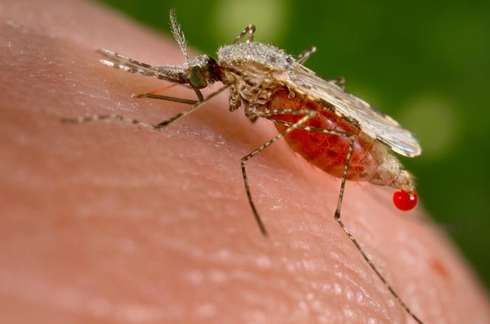Researchers pinpoint traits that help 'urban' mosquito transmit malaria

An international team of researchers led by Virginia Tech scientists analyzed the genome of a mosquito species notorious for transmitting malaria in urban environments and discovered how the mosquito evolves rapidly to withstand a variety of environmental conditions.
The results, published in Genome Biology, provide a better understanding of a common carrier of malaria in urban environments and may lead to better prevention efforts.
Virginia Tech sequenced the genome of the mosquito Anopheles stephensi, providing a platform for fundamental and translational research, said Zhijian Jake Tu, a professor of biochemistry in the College of Agriculture and Life Sciences, a Fralin Life Science Institute affiliate, and co-senior author of the study.
"Anopheles stephensi is emerging as a model mosquito species for genetic and molecular studies," Tu said.
Overall, the genome map will be an important tool for scientists to identify potential targets for mosquito control. In addition, studies of immunity genes will offer insights into mosquito biology and mosquito-parasite interactions, the researchers said.
"Genome mapping of Anopheles stephensi revealed genetic differences between it and a species especially dangerous for transmitting malaria in Africa, Anopheles gambiae," said Igor Sharakhov, an associate professor of entomology in the College of Agriculture and Life Sciences, a Fralin Life Science Institute affiliate, and co-senior author of the paper.
"This tells us that the sex chromosome is especially prone to mutations that flip chromosomal segments, which in turn may promote new, evolved species," Sharakhov said.
First authors Xiaofang Jiang of Wuhan, China, a Ph.D. student in the Genetics, Bioinformatics, and Computational Biology Program, used bioinformatic tools to assemble the genome and perform RNA sequencing analysis, and Ashley Peery of Christiansburg, Virginia, a Ph.D. student in entomology in the College of Agriculture and Life Sciences, mapped the genomic sequences to chromosomes.
"This work represents a highly collaborative undertaking," Peery said. "I couldn't accomplish the wet bench side of things without the computational work that was completed by co-first author Xiaofang Jiang."
More information: The electronic version of this article is the complete one and can be found online at: genomebiology.com/2014/15/9/459
Journal information: Genome Biology
Provided by Virginia Tech


















